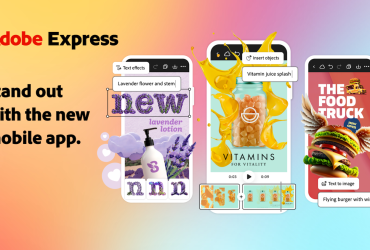This article originally appeared in the September 2018 issue of WiFi HiFi Magazine
If you sat down and tallied up all of the monthly services, software, apps, and other tech subscriptions you have, what would the total be? A couple hundred bucks? More? Less. Have you ever really taken a look at what you’re spending on tech that you don’t actually own?
Years ago, I had enough CDs, DVDs, and paperback books to fill numerous shelves. Growing up, my father had amassed a collection so large of VHS tapes that he had to create a card catalogue to organize them.
Today, while there are still avid media collectors holding on to that feeling of nostalgia (my collections are long gone), many of the newer generations would find such an activity ludicrous. Why would you clutter your home with so much physical media?
We now live in the “subscription economy,” where people prefer to pay a single fee to enjoy seemingly limitless access to…whatever it is they’re accessing. Part of this trend has been around for decades, such as subscribing to television service, “renting” movies on-demand, or cell phone service plans. But our spending on those core tech services has grown and changed; and the trend has extended far beyond those traditional services.
We don’t buy CDs, or even download music anymore. We stream it. We don’t grab full seasons of old TV series on DVD, nor do we rent and return movies. We pay Netflix $10/mo. (or more) to access a wide selection of archived, new, and original TV series and movies, and use an Internet or wireless connection to binge watch, at our leisure, as much as we want, when we want. Even shopping has fallen plague to the subscription economy: we sign up to have everything from shaving cream and accessories, to makeup, socks, fitness clothing, hot sauce, and gaming gear, delivered to our door in subscription boxes.
A once level of pride in ownership has been replaced by an immense love for extreme consumption. Our gluttonous desires for entertainment, media, connectivity, and more, is fuelled by the few limits that exist in the subscription economy. You probably watch more movies with Netflix than you would have ever bought on Blu-ray; and can binge through five series in the time it would have previously taken you to watch one. In paying $9.99/mo., I can access almost any song imaginable and stream it at home, on my phone, even my smartwatch, or in the car. I love daring someone at a gathering to request a tune that I can’t play at the touch of a button.
The subscription trend has crossed over to the business world as well. Thanks to the convenience of the cloud, particularly in remote and flexible work environments, companies are moving toward cloud-based software and programs versus boxed software and old, dusty discs.
There has been some evidence of pushback. The renewed growth in the sale of paperback books and the resurgence of vinyl suggest that consumers haven’t completely lost interest in actually owning media. But by and large, the subscription economy has taken hold.
Are We Really Saving Money?

We know the subscription economy is helping us save space. But is it helping us save money? And do we actually realize how much we fork out every month on tech-related subscriptions?
Dhavel Moogimane, Managing Director at Waterstone Management Group, told Moneyish that a lot of the subscriptions people have tend to fade into the background, or “cease to register as something that is ‘paid for’ in a way we pay for other things, like meals at restaurants, a new rug, or even Uber rides.
“We become used to things like Spotify, Audible, perhaps the New York Times app,” he says, “as services we have and love and use all the time. They feel a far cry from conscious purchases.”
Waterstone Management Group conducted an analysis of 2,500 Americans, looking at 21 categories of tech subscriptions, and found that many of us grossly underestimate how much we actually spend on them. Maybe we don’t realize how much $10 here and $5 there adds up, or forget about items we’re billed for annually, or for which monies are automatically withdrawn from our accounts each month.
When respondents were asked how much they spend monthly on digital services, devices, and subscription boxes, and given 10 seconds to reply, the average amount estimated was US$79.74. Once they were given a few examples, like Netflix and Spotify, and had their “oh yah” moments, the figure rose 40% to US$111.61. But when participants sat down to make an exhaustive list, the final average figure? US$237.33. That’s a 197% increase from their first initial guess, and a 112% from the second one.
The majority (84%) underestimated how much they spend every month; only 6% of respondents got it spot on. Of the 84% who underestimated their monthly tech subscription spending, 27% did so by more than US$100-US$199, 23% by US$25-US$99, 14% by US$200-US$299, 10% by less than US$25, 6% by US$300-US$399, and 4% by more than US$400.
How Much Does the Average Person Spend on Subscriptions?

I’d hardly consider myself an average person when it comes to my consumption of technology. But for the sake of this article, I decided to take a good, hard look at my subscription spending. My household total, which includes Netflix, Spotify, Apple Music, Amazon Prime (including Prime Video and Music), Bell Fibe TV and Internet, Xbox Live, Microsoft Office 365, iCloud storage, SiriusXM in the car, Rogers Wireless, home security monitoring, and a few subscription boxes, easily surpasses $300. Polling other heavy tech users, the amount was about the same.
Let’s take a look at some of the most common tech subscriptions.
Communications/Cellular

Cellular service subscriptions have existed long before the subscription economy took over. But as our consumption of data rises, so, too, have our monthly bills.
Research by Global News, using data from the 2017 Price Comparison Study of Telecommunications Services in Canada and Select Foreign Jurisdictions published by Innovation, Science, and Economic Development Canada (ISED) and NGL Nordicity Group, uncovered that, not surprisingly, Canadians pay among the highest for wireless service in the world. The average cost of a Level 3 wireless plan, which includes 1,200 minutes, 300 texts, and 1GB of data, was $70.70/mo., and the average for Level 2 plans (450 minutes, 300 texts, and no data) was $40.95/mo. When factoring in subsidized pricing for a device like the iPhone 8, purchased on a two-year contract, pricing ranged between $95 and $115/mo. from the Big Three carriers for packages that included just 2GB of data and unlimited calling Canada-wide or in Canada and the U.S.
Participants in the Waterstone analysis reported being most aware of how much they spend on mobile phone service (an average of US$100/mo.), and least happily hooked on their mobile service provider, a sentiment that would likely be duplicated in a study north of the border.
There’s a reason why companies like Freedom Mobile, owned by Shaw Communications, are gaining traction. In the aforementioned Global News analysis, Freedom Mobile, which launched an aggressive advertising campaign starring actor and Canadian Will Arnett in 2018, clocked in as the most affordable, at $65/mo. with a plan that included 10GB of data, unlimited Canada and U.S. calling, and unlimited Canada-wide text messaging. The ad campaign touted 10GB for $50/mo., with $0 in overage charges. Once you exceed 10GB of data, speeds are throttled to 128-256kbps until your new month commences.
According to data from Solutions Research Group, 29% of the 24 million smartphone users in Canada, or about seven million people, exceeded their data limit within a six-month period last year. With some carriers charging upwards of $100/GB in overages (!), it’s not only the subscriptions themselves that are adding to your monthly bottom line, but the usage over and above them that can make a serious dent in your wallet.
Music Streaming

Your spending on music may have gone down with the adoption of streaming. A subscription to a service like Spotify is about $120/yr., which equates to about six CDs at $20 each, or thousands of songs versus about 90. Back in the days of CDs, you might have purchased at least one CD every month, easily spending double what you pay for Spotify, and gaining access to far less music (though you owned the music and the informative jackets; and the songs wouldn’t disappear if you didn’t “renew.”)
This makes it tempting to subscribe to every music service under the sun, especially since each has its own advantages. With Amazon Music, it’s the inclusion of Prime free shipping; with Spotify, it’s seamless access through a wide selection of home speakers; with Apple Music, it’s intelligence and personalization features; and with Tidal, it’s hi-res streaming for audiophiles. But there’s a lot of redundancy, and you risk paying for services you might not use as much as you think. If you subscribed to three music streaming services, your total annual spend would be about $360. Is it worth it?
Interestingly, of the 21 categories of tech included in the Waterstone analysis, consumers are most happily hooked to a specific music streaming service.
A mid-year update of CTA’s flagship report, U.S. Consumer Technology Sales and Forecasts, released in July 2018, found that consumer expenditures on subscription music and video streaming services are projected to reach US$19.7 billion in revenue in 2018, 38% higher than 2017. Spending on on-demand audio content (e.g., Spotify, Pandora, or Apple Music) was projected to bring in US$6.3 billion in revenue in 2018.
“We are undergoing a huge shift in how people consume content,” said Rick Kowalski, Senior Manager of Market Research and Business Intelligence, CTA. “Music streaming services continue to gain subscribers at a furious pace, luring regularly paying music listeners with attractive introductory offers and benefits such as ad-free listening. This remarkable growth in streaming services shows us that the phrase ‘content is king’ is more relevant than ever.”
Streaming isn’t the only subscription-based form of music access: let’s not forget technologies like satellite radio. Have you signed up for listening to SiriusXM in the car, at the office, or on the computer? Add that cost to your audit as well, which can be anywhere from $10/mo. to $22/mo.
Computing/Storage

Cloud software like Microsoft Office 365 lets you work seamlessly across multiple devices, store limitless data, and get updates as needed without having to buy new products. You’ll never have an outdated OS and need to buy a new piece of boxed software. A lot of small businesses are adopting cloud-based software like this in many categories, including internal messaging and communications services like Slack and Trello, or even subscription-based accounting software.
iCloud storage is a common monthly add-on for iPhone users, since the smartphones don’t accept expandable memory. There are alternatives to eliminate this monthly fee, such as MFi-certified flash drives, or cases that add storage to the smartphone. Or, use iTunes to back-up data and apps to your computer, or an external hard drive instead.
Subscription Boxes and Shopping

Can you imagine paying someone for the ability to buy goods from them? (Any Costco member certainly can!) Amazon Prime costs $79/yr. ($6.67/mo.) and provides free shipping on eligible purchases, as well as online cloud storage for files, access to Amazon Prime Music and Amazon Prime Video, and more.
The idea of subscription-based shopping, known as the circular economy, is appealing because of the convenience and freedom. A big trend in this space are subscription boxes, led by companies like the Dollar Shave Club, FabFitFun, and other Sock of the Month-type clubs. Shoppers enjoy the element of surprise when a new “gift” arrives.
McKinsey & Company reports that the subscription e-commerce market has jumped more than 100% each year over the last five years. Fifteen per cent of online shoppers have signed up for one or more such services to receive goods on a recurring basis. In 2016, the subscription box industry made more than US$2.6 billion. You can even get a car on a subscription basis: BMW, Cadillac, Hyundai, Lincoln, Porsche, and Volvo have launched programs that allow customers to subscribe to use vehicles on loan, and Jeep will be launching one in 2019. Borrow a pick-up truck when you need one, try out a new car for a few months, then upgrade as your needs or desires change.
“Especially in the younger generation, we’re seeing a different consumer base who doesn’t think of commitments on the same length of time as prior generations,” says
Libby Murad-Patel, Vice President of Marketing and Strategic Insights for Jumpstart Automotive Media, a company that tracks and reports on car buying trends.
Television/Internet

Canadians have been subscribing to television service for decades. But like with wireless service, pricing has gone up along with the number of channels and premium offerings that are available. Yet to get the premium or specialty channels customers want, they must buy “add-ons” that tack more onto the final bill. Many television services come bundled with Internet service as well, which locks customers in if they want to take advantage of discounts.
It’s not surprising, then, that the trend towards cord-cutting – cancelling pay TV subscriptions altogether – is on the rise. In fact, Deloitte’s 12th annual Digital Media Trends Survey, found that 16-22% of Generation-Z, Millennial, and Generation-X households have never subscribed to pay TV, and are unlikely to ever do so. And of those who do subscribe to one, half of all respondents said they were dissatisfied with their service, and feel they get little value for money. Pay TV penetration in the U.S. fell to 63% in 2017, down from a long steady 75%.
Conversely, the number of households subscribing to streaming TV services is blowing up. More than half (55%) of U.S. households subscribe to a paid streaming video service. In under a decade, the percentage of U.S. households subscribing to a paid video streaming service grew 450%, from just 10% in 2009 to 55% in 2017.
What’s more, U.S. consumers aren’t settling for picking just one: they subscribe to an average of three on-demand streaming services, reflecting US$2.1 billion spending. With its projected US$19.7 billion in revenue in 2018 for subscription music and video streaming, CTA forecasts that spending on video streaming content specifically, through sites like Netflix, Hulu, and Sling TV (in the U.S.), will reach US$13.4 billion this year. That’s a lot of coin for content you don’t get to keep for posterity.
Americans are spoiled for choice when it comes to paid streaming video services. And even in Canada, the options are growing. More options are popping up to replace big cable bills with smaller network-specific ones, like CBS All Access, which launched in 2018 offering access to 7,500 of the network’s current series and back catalogue, including late night and daytime shows, and 24/7 streaming news via CBSN. Most recently, both Disney+ and AppleTV+ launched in Canada as well as the U.S.
If you were to presumably cut the cord and subscribe to three streaming services, you’d only have to pay about $30/mo. But you would also need a robust and ample home Internet package to accommodate all of the streaming. Internet Service Providers (ISPs) like Teksavvy are stepping in with affordable packages to rival the Big Three.
“Video streaming services are offering an increasing amount of exclusive content,” says Kowalski, “and live TV streaming options are becoming widely available this year – and that has more consumers exploring their over-the-top video options.”
Digital Books/Magazines

In March 2018, Apple purchased Texture, a popular digital magazine subscription service that provided access to more than 200 digital magazines for $14.99/mo. It has since been replaced with Apple News+, which is also a subscription-based service.
Discount sites like Groupon sometimes offer deals on the subscription, and Rogers, which was a part-owner of previous Texture owner Next Issue Media, LLC, has historically offered promotional pricing with new and renewed wireless contracts.
There are individual apps for which you can incur costs as well, including ebook downloads through services like Kobo or Amazon Kindle, or subscriptions to specific magazines and/or newspapers. The New York Times app is $14.99/mo.; $24.99 if you want to access additional features like crosswords and cooking. If you read every issue, cover to cover, it’s worth it. If you browse the occasional article, maybe you’re better off grabbing a copy from the newsstand when you have the time.
Gaming/Apps

You might have things like fitness apps to which you subscribe to log data like runs, cycling, or other sports activities. Fitbit Premium, for example, gives you access to a variety of different workouts from your phone as well as other details for a fee (with free trial periods as well.) Many apps are free to download but can suck you into signing up for a “premium” version for a cost once you’re hooked on using them. Voxer, a great app for business users to communicate with staff via two-way, walkie-talkie-like functionality, is free for the “personal” option, but $3.99/mo. if you want to access “Pro” features, like using the walkie-talkie mode, having unlimited storage for messages, admin-controlled chats, and more.
On the gaming end, subscriptions can quickly add up, too. An Xbox Live Gold subscription, which lets you play online with friends, get free games, exclusive discounts, and access to streaming services like Netflix and Twitch, and live and on-demand sports apps like MLB and ESPN, is $11.99/mo. Have you actually paid attention to everything you’re paying for with such a subscription, and making use of the benefits to maximize the fee?
Home Security

Smart home setups often include security cameras, which can come with monthly monitoring fees for cloud storage of archived footage. There are plenty of options that don’t include recurring fees that can help eliminate this cost. A neat option is Safe by HUB6, which uses security hardware you might already have in the home, but redirects alerts triggered by the system to your own phone, a friend or family member, or another type of professional monitoring service of your choosing.
What Does This Mean for Retail?
The bad news for retail: the sale of physical media is dwindling, with the exception of paperback books and vinyl which, as mentioned, are experiencing renewed interest among some consumers. Retailers have also shifted to media like UHD Blu-ray discs, which attracts videophiles who want to enjoy the improved video quality they offer. But the same quantity of sales we once saw will likely never return.
The good news: there are so many devices built around the subscription economy that you can leverage. For smartphones, that includes accessories to keep them protected, powered up to match the increased usage, and able to be used as sources for private (or group) listening.
With streaming, smart TVs offer seamless access to streaming video services. Accessories like streaming boxes and sticks from the likes of Apple and Roku, as well as those that can load software like Kodi, represent a burgeoning category. Network-capable AV equipment that can provide direct access to streaming services, including both video and music, will catch shoppers’ eyes, too.
The growth in streaming will lead to a need for more robust Wi-Fi at home, with routers that can effectively steer traffic, and optimize performance for a multitude of devices running at the same time; and Wi-Fi access points to ensure seamless coverage throughout the home.
The money consumers save on subscriptions, and the heavy consumption patterns they encourage in some categories, opens up wallets for shoppers to spend in others.
Tips for Maximizing Your Tech Subscriptions
So we’ve accepted that the subscription economy is a reality. And while it can work out to be more affordable in the long run, the more you sign on for, the quicker it adds up. How can you save?
While a mobile phone subscription is essential, you can look at ways to shave costs. Share plans for multiple people in a household provide a bucket of data for everyone. Data use can be more closely monitored, and kids can be cut off if they are using too much. You can also set up alerts with most carriers to be warned when you’re approaching limits to avoid overage charges.
If you believe you’re paying too much for a mobile plan once you tally up the figures, don’t be afraid to contact your carrier to renegotiate your contract. Work with a customer service rep to find a way to cut down your monthly bill. If you’re paying for 10GB of data, for example, but have never used more than 2 or 3 in a month, switching to a smaller data package might suffice. Are you paying for voicemail when you never really use it? Eliminate that. If you aren’t happy with how they can adjust things, explore other carrier options.
With streaming music or video services, consider switching to the free, ad-supported streaming option if you find that you want to keep two or more services, but can’t afford both. Also look at compatibility: if you can still access Tidal, for example, from all of the same devices as Spotify, maybe it’s time to cut ties with the latter.

The biggest cost-savings in video will likely come from rethinking your need for cable/satellite TV. If you want to keep the subscription, can you scale back to access just the channels you need? Will adding $6/mo. for CBS All Access satisfy your needs for “live” TV, such that you can cut the cord? Maybe it’s time to look at a streaming box that runs software like Kodi.
Whatever the service, part of your audit should be determining if you are making full use of what’s included. Do you use Microsoft OneDrive to store backups of data, or are you paying monthly for 365 just for the Office programs? You might want to grab boxed software or download keys for just the programs you need instead, like Word, Excel, and PowerPoint.
Bottom Line
It’s unlikely that our tech subscriptions will ever fall into the same black hole that many gym memberships do, whereby we sign up, pay monthly, and never make use of them. Television, Internet, music streaming, and cellular service are subscriptions we likely use every day. But what about others?
Do a thorough audit annually to re-examine all of your subscription services, see what can go, and what might be worth downgrading to save a few pennies. Are you using everything that comes in that subscription box that’s delivered every month, or do you end up giving half of it away to friends and family? Are you paying for a premium gaming subscription to play online, but not making use of the other features that come with it? Are there redundancies and overlap among subscriptions? Do you have Crave just to watch Letterkenny when you could just buy a Blu-ray box set of the series for a one-time fee? Do you subscribe to Spotify at home, but haven’t bothered to download the app on your phone and enjoy tunes on the train in to work? Doing a tech spending audit isn’t just about eliminating unneeded subscriptions but also making sure you’re maximizing value for the ones you keep.
If you do decide to scale back after conducting your audit, the good news is that you’ll have more money to spend on tangible goods you can actually touch, feel, enjoy, and use in partnership with the useful subscriptions that made the cut. Maybe Spotify has to go. But those Tidal tunes will sound that much better when you stream them over a brand new hifi system.









